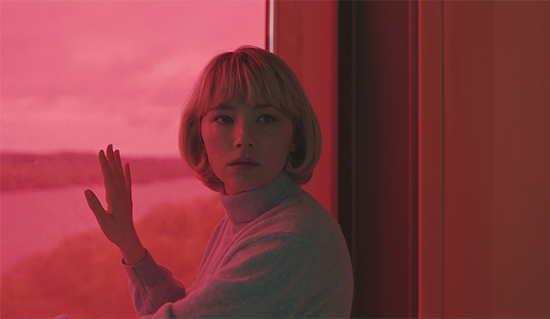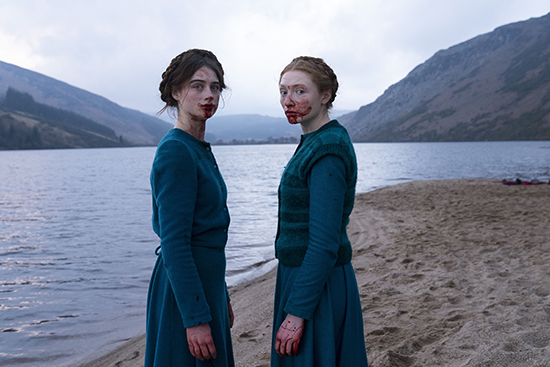It has become a cliché to say that we are living in “challenging, uncertain times.” Between the erosion of progressive movements and the rise of the far-right, economic collapse, climate change, and something called COVID-19, these past few years have been largely defined by catastrophe. In order to cope with our collective dread about the future, film audiences have enthusiastically (and perhaps, surprisingly) embraced horror as their genre of choice. A similar phenomenon occurred in the 1970s, when there was an uptick in horror film production amid social unrest about the Vietnam War. Horror, it seems, helps us to cope with our fears and fascinations, and to explore the challenges of our times — perhaps even moreso than other film genres. On the heels of #MeToo, rollbacks to reproductive rights, and a widespread return to radical feminism, horror may finally be making a feminist turn, as new films look to expose our anxieties about gender in 2020.
Today’s horror films statistically attract younger, more diverse audiences across class positions than any other genre, and their share of the film market has doubled since the early 2000s. What has been called a new Golden Age of horror has largely garnered interest around “prestige” projects that combine the genre’s staple thrills and gore with artistically, psychologically, and politically sophisticated filmmaking. In 2017, Jordan Peele laid a framework for successful horror with Get Out that was simultaneously thought-provoking, entertaining, profitable, and Oscar-worthy. While Peele’s rise as the scion of prestige horror was swift, feminist horror was slowly gaining traction in the background. In 2014, Jennifer Kent’s The Babadook stunned audiences with the nightmarish trials of a young mother, while Robert Eggers told the story of a young woman repressed by her religious family in colonial New England with The Witch in 2015. Critics have even revisited cult horror classics like Carrie to appreciate their nascent feminist commentary, years later.
The feminist horror community has consequently been ballooning in popularity, and “Women in Horror Month” is celebrated every February with screenings and festivals around the globe. One such event is the annual Final Girls Festival in Berlin, which recently celebrated its fifth iteration, and has also been put on in London, Glasgow, New York, Seattle, and Valparaiso.
Festival co-director Eli Lewy explains that feminist horror “uses women’s reality: the threat of harassment, the complexity of motherhood, the socialization that we often want to fight against, and displays it on screen in all of its ambivalent, messy glory.” The 2020 edition included films that explored queerness, sexual violence, immigration, maternity, and the Manson murders. “As strange as it may seem, horror is one of the most honest genres out there, because it allows us to deal with topics that many others shy away from, in a cathartic way.”
Thanks to a close-knit community of women and gender non-conforming horror fanatics, combined with a growing mainstream desire for honest, cathartic cinema, feminist horror is arguably more popular than ever. 2020 will see the release of major original horror properties from numerous women and/or feminist-concious directors: Rose Glass’ Saint Maud, Nia DaCosta’s Candyman 2, Małgorzata Szumowska’s The Other Lamb, Emerald Fennell’s Promising Young Woman, Carlo Mirabella-Davis’ Swallow, and Natalie Erika James’ Relic make up just a handful of the titles being buzzed about.

Many of these upcoming releases are first features from new filmmakers, showing that horror is also providing a path into the industry for those who may have historically faced barriers to entry.
Natalie Erika James, whose feature debut Relic premiered at Sundance 2020, has always been invested in the horror community, but also acknowledges the genre’s newfound commercial viability. “There’s been a real shift in the types of horror movies being made — you know, horror that not only takes you for a thrilling ride, but also has an emotional heart or something to say or really strong social commentary,” she explains. “There’s a general trend of people willing to support female filmmakers more, and at the same time, it’s a perfect time for female horror directors, because of the combination of those things.”
Relic was co-produced by Carver Films in Australia and Nine Stories, Jake Gyllenhaal’s production company, and was recently bought by IFC Midnight with plans for an autumn release. James has already begun work on her sophomore feature Drum Wave, which she describes as a Japanese folk horror, based on a short film screened at this year’s Final Girls Festival.
“The last decade has seen a real boom in women making horror,” adds Lewy. “We’ve also had some filmmakers say festivals like ours have encouraged them to make their own horror films, which is amazing to hear.”
As feminist horror attracts more attention, what effect will it have on the wider horror film community, or for feminist representation in cinema more broadly? Since #MeToo, studios have largely responded to feminists’ calls for inclusion by churning out tepid stories about privileged women that rely on superficial “girl power” gimmicks — what might be known as “empowerment comedies” that do very little to actually reckon with the contemporary realities of women and gender non-conforming people’s lives. 2019’s Charlie’s Angels reboot or the recent Like a Boss failed to satisfy both socially-conscious audiences and box office returns. By contrast, horror films tend to be profitable because they don’t cost an arm and a leg to produce; Get Out made $255M on a $4.5M budget, while simultaneously skewering white supremacy. Likewise, feminist projects like Cam, Revenge, A Girl Walks Home Alone At Night, and The Babadook all achieved critical acclaim with budgets under $3M.
Even so, the inclusion of women in horror has been fraught at best. Jason Blum, founder of Blumhouse Productions and producer of Get Out, Happy Death Day, and The Purge, drew criticism in 2018 for suggesting that there simply are not enough women filmmakers interested in directing horror (ironically, 55% of Blumhouse’s estimated audience are women). The industry’s failure to recognise the vitality of feminist horror goes beyond hiring practices, and extends to how films are received; Karyn Kusama’s 2009 high school satire Jennifer’s Body was panned by critics who discounted its insightful gender dynamics, and made it out as a vehicle for Megan Fox’s sex symbol status instead. Horror has made a more inclusive turn in recent years, but filmmakers, producers, critics, and audiences may still be inclined to see it through a narrow gaze.
Feminist horror faces some uphill battles as it penetrates the mainstream (recent COVID-19 cancellations being the latest one), but it still remains one of the most insightful, inclusive, and exciting receptacles for feminist cinema, offering hope that films can potentially have both a political consciousness and popular appeal.


